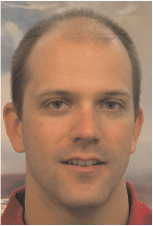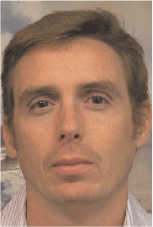Constraining fluid migration in low density data area: successful use of integrated modelling in the Southern Perth Basin
Laurent Langhi A , Bozkurt Ciftci B and Julian Strand AA CSIRO.
B Genel Energy.
The APPEA Journal 54(2) 534-534 https://doi.org/10.1071/AJ13107
Published: 2014
Abstract
Constraining trap integrity or CO2 containment potential in areas with low density of data is challenging. We show here how the integration of hard data and modelling improved our understanding of the subsurface tectonic and stratigraphic architecture and ensured an initial definition of hydraulic behaviour of faults and fractures in the onshore Southern Perth Basin. A first-order geomodel was built based on interpretation of low-density 2D-seismic data and constrained by well, geophysical, and outcrop data. Forward stratigraphic models were deformed and implemented in the geomodel to predict the distribution of the phyllosilicate content. Membrane fault-seal prediction was performed based on the Shale Gouge Ratio algorithm to estimate the lateral migration potential. Characterisation of the stress state of fault planes was used to define the likelihood of reactivation and to predict vertical migration and caprock bypass. The elastic dislocation method was used to model the density and mode of failure of subsidiary sub-seismic faults that can impact on the caprock integrity. This was also used to constrain and validate the structural model. The integrated modelling significantly decreased uncertainties on the subsurface architecture and ensured the first-order definition of the CO2 migration and containment potential for the Wonnerup reservoir in the SW Hub. The maximum CO2 column heights supported by faults and potential leak points were estimated and migration scenarios and risks were defined.

Laurent is Team Leader with CSIRO Earth Science and Resource Engineering; he has 10 years experience in petroleum geology and exploration geophysics. After a M.Sc. and a Ph.D. in geology and geophysics awarded in his native Switzerland, Laurent worked as a researcher at the University of Western Australia and as an exploration geologist/geophysicist in the oil & gas industry in Perth. In 2006 he joined CSIRO as a senior researcher focusing on trap integrity prediction, assessment/visualisation of fluids migration and geological and geomechanical modelling. He also works in the fields of seismic attributes analysis and quantitative seismic for conventional hydrocarbon and CCS. |

Bozkurt received Bs (1996), Ms (2001) and PhD (2007) degrees all in geology. He worked for a few years as a field geologist in base-metal exploration and joined Turkiye Petrolleri AO (TPAO) in 2001, where he involved in various hydrocarbon exploration projects across eastern Mediterranean region. In 2008, he joined CSIRO Earth Science and Resource Engineering as a senior researcher where he focused on reservoir to basin scale structural and fault seal analysis. Bozkurt is now working as a senior exploration geophysicist with Genel Energy in Turkey. |

Julian Strand is a Senior Research Scientist at CSIRO Petroleum / Earth Science and Resource Engineering, primarily working on structural geology and issues related to incorporating structural geology into reservoir and basin models. Based in Perth since 2005, he is a member of the AAPG and EAGE. Also, he was part of the Fault Analysis Group for nine years at the University of Liverpool and latterly UCD in Ireland. He attended the University of Liverpool and Imperial College, London. |
References
Griffiths, C.M., Seyedmehdi, Z., Salles, T., and Dyt, C., 2012—Stratigraphic forward modelling for south west Collie Hub: phase one—static model. Report number EP13068. Accessed 1 February 2014. http://cdn.globalccsinstitute.com/sites/default/files/publications/120121/stratigraphic-forward-modelling-sw-collie-hub-anlec.pdfIasky, R.P., and Lockwood, A.M., 2004—Gravity and magnetic interpretation of the southern Perth Basin, Western Australia. Record 2004/8, 32P. East Perth, Australia: Western Australia Geological Survey.
Knipe, R.J., Fisher, Q.J., Jones, M.R., Clennell, M.B., Farmer, A., Harrison, B., Kidd, E., Mcalister, E., Porter, J.R., and White, E.A., 1997—Fault seal analysis: successful methodologies, application and future directions. In: Moeller-Pedersen, P. and Koestler, E.D.S (eds.) Hydrocarbon seals: importance for exploration and production: Norwegian Petroleum Society Special Publications, 7, 15–40. Amsterdam, The Netherlands: Elsevier.
Le Blanc Smith, G., 1993—Geology and Permian coal resources of the Collie Basin, Western Australia. Report 38. East Perth, Australia: Western Australia Geological Survey.
Nicholson, C.J., Borissova, I., Krassay, A.A., Boreham, C.J., Monteil, E., Neumann, V., Di Primio, R., and Bradshaw, B.E. (2008). New exploration opportunities in the southern Vlaming Sub-basin. The APPEA Journal and Conference Proceedings 48, 371–80.
Okada, Y. (1992). Internal deformation due to shear and tensile faults in a half-space Bulletin of The Seismological Society of America 82, 1018–40.


